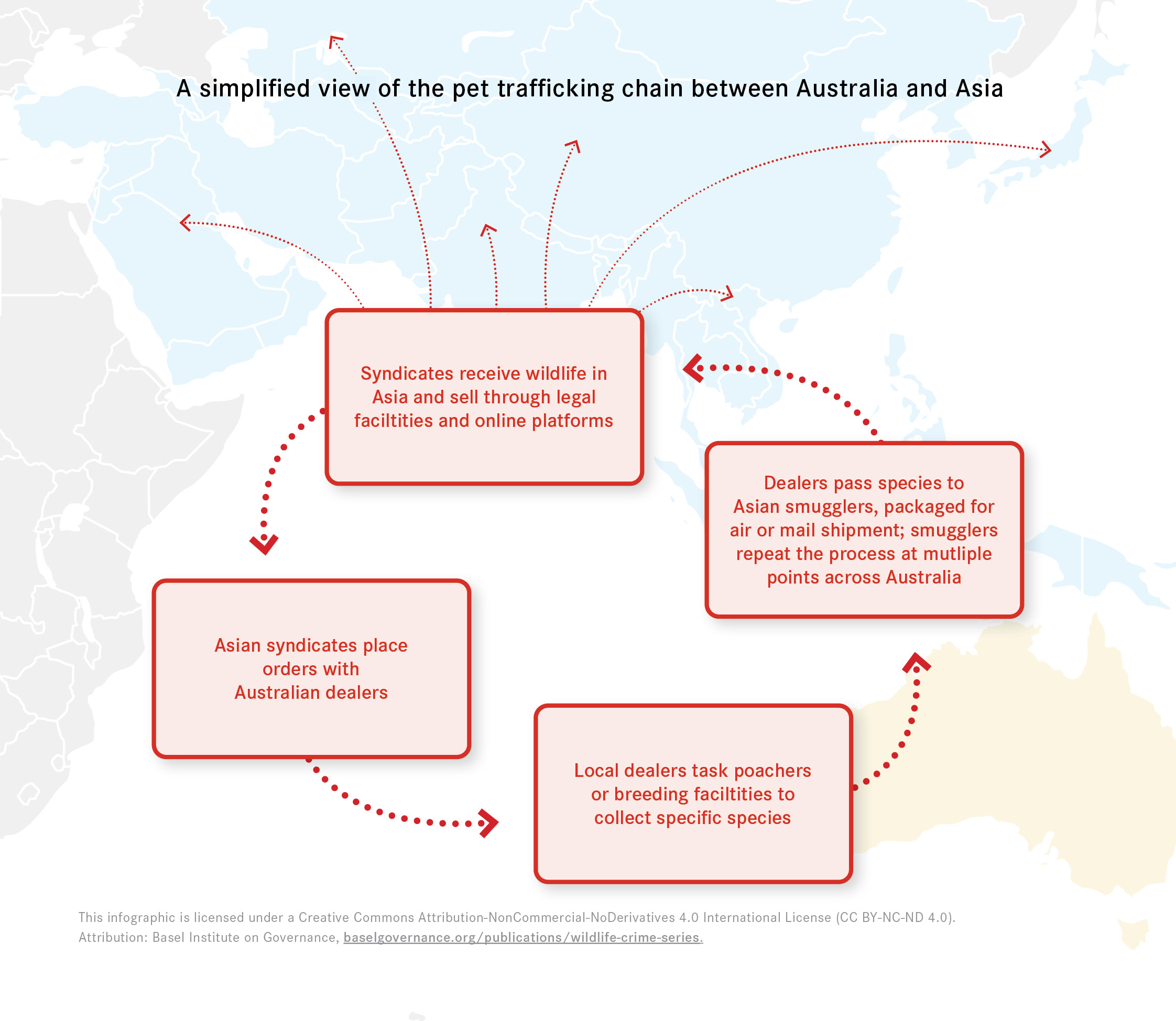Part 2 of the Wildlife crime – understanding risks, avenues for action learning series provides companies, policy makers, practitioners and law enforcement with information and background knowledge on crime and corruption in the exotic pet trade.
5. Focus on Australia: pet trafficking hub
5.2. Strong laws, weak enforcement
Within Australia, the Department of Sustainability, Environment, Water, Population and Communities oversees the CITES permit system. All import and export of wild animals is prohibited without a licence, and a permit system is in place for captive breeding and native flora collecting and growing (Wyatt, 2013). In addition, states and territories have their own system of licensing, enforcement and sentencing of offences.
While strong laws exist, in practice custodial sentences have typically been rare and fines are often less than the value of wildlife seized (Wyatt, 2013; Alacs, 2008). Wildlife traffickers take advantage of varying legislation and lack of enforcement to get away with smuggling wild animals.
According to multiple studies, wildlife crime in Australia remains a low priority, typically perceived as related to individual transgressions, not as an organised crime.
The following infographic offers a simplified view of the pet trafficking chain between Australia and Asia.
